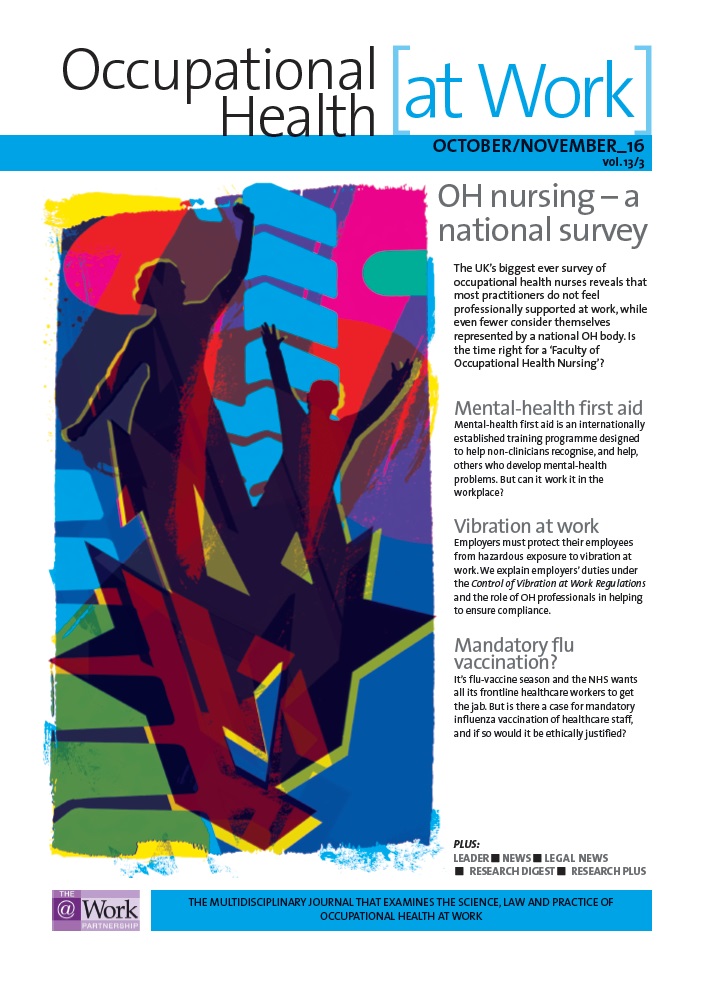October/November 2016 (vol. 13/3)
ContentsFeaturesNewsLegal
NewsResearch DigestResearch PlusCPD
Research Plus
Occupational hearing loss in railway workers
Railway employees are generally not at increased risk of occupational noise-induced hearing loss (NIHL), according to this longitudinal study. All 9,640 participants were employees of the Norwegian State Railway and were examined regularly as part of their mandatory medicals. They were observed for an average of 10 years between 1991 and 2014. Only those workers with two complete audiograms were included. The data were adjusted for duration of follow-up, age, sex and occupation and assessed according to occupational group (train drivers, conductors, bus drivers, traffic controllers, train maintenance, track maintenance and others). Older age was a significant predictor of permanent threshold shifts (PTS) in both the 3–6 kHz and 0.5–4 kHz ranges; male gender was associated with PTS in the 3–6 kHz range. Occupation had only a small effect on PTS: 2.4–3.2 dB shift in the 0.5–4 kHz range and 6.3–7.0 dB in the 3–6 kHz range for all occupational groups and was only significantly predictive for track maintenance workers (PTS = 3.2 dB at 0.5–4 kHz, p <0.05; and 7.6 dB at 3–6kHz, p <0.01). Railway workers’ hearing losses were similar to non-noise exposed references (taken from the ISO 1999 standard on the estimation of NIHL).
Occupational Health at Work October/November 2016 (vol. 13/3) pp41



